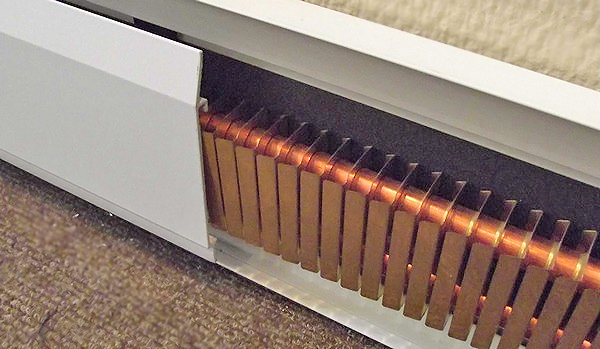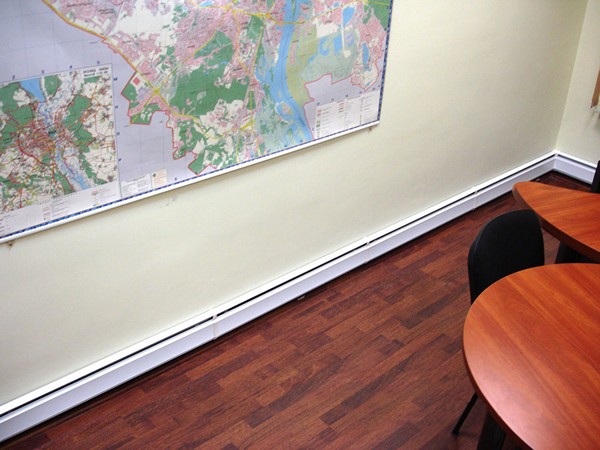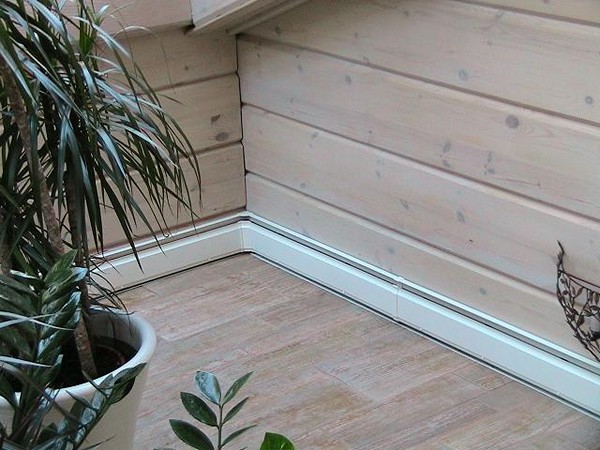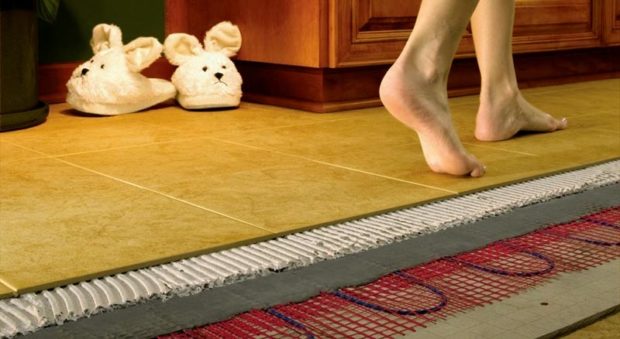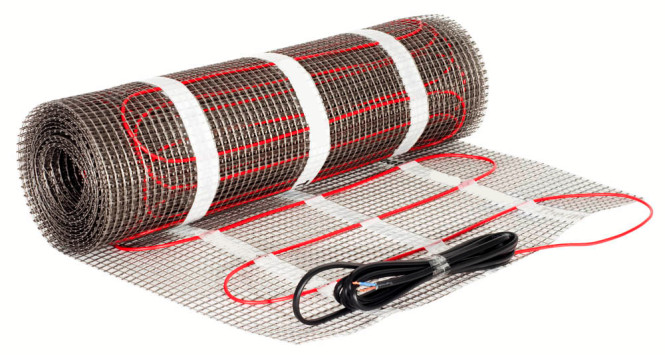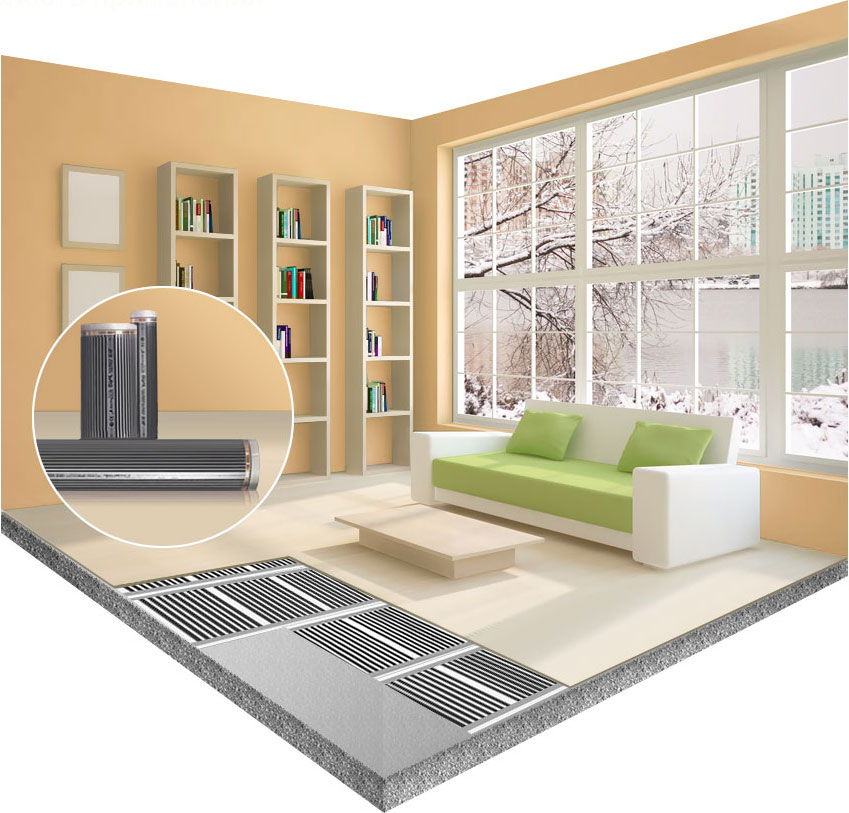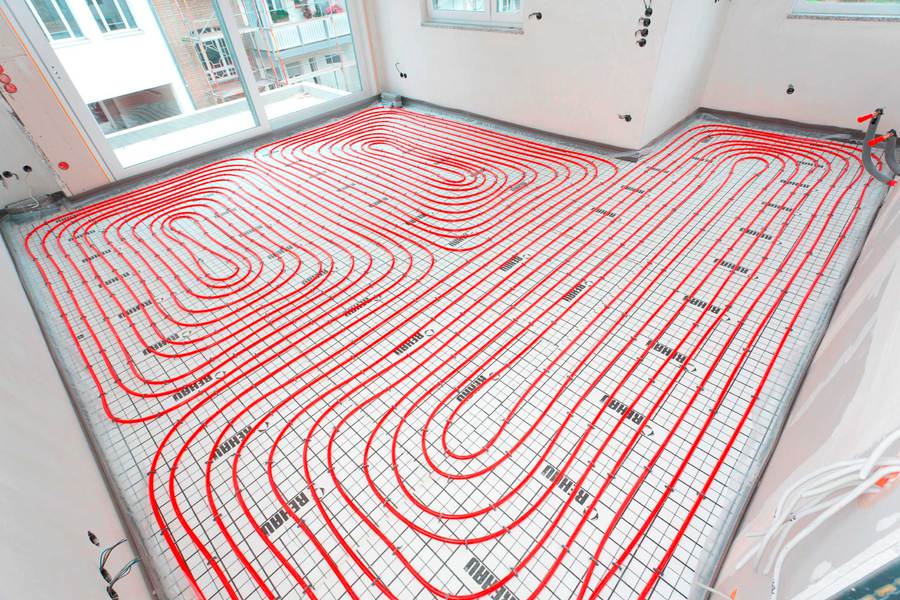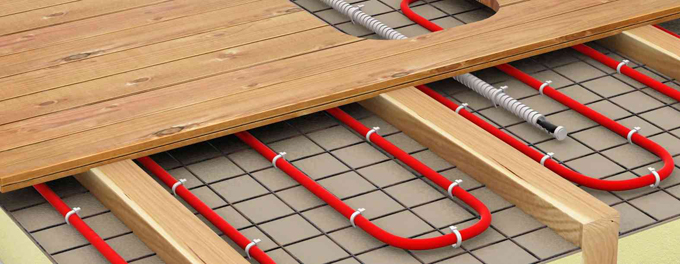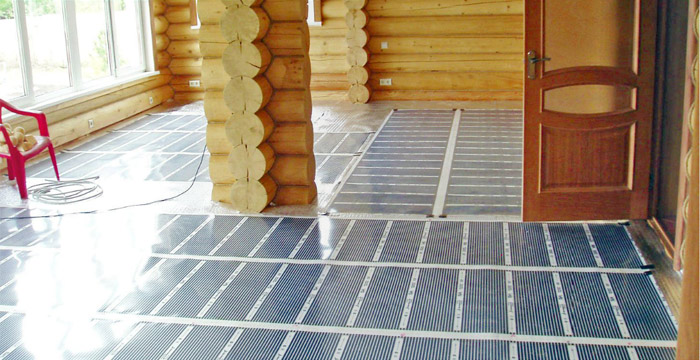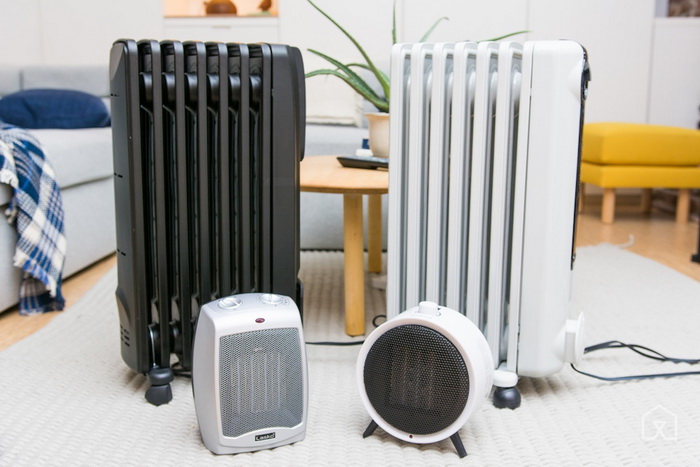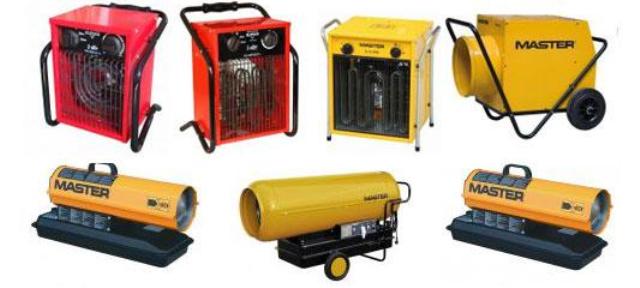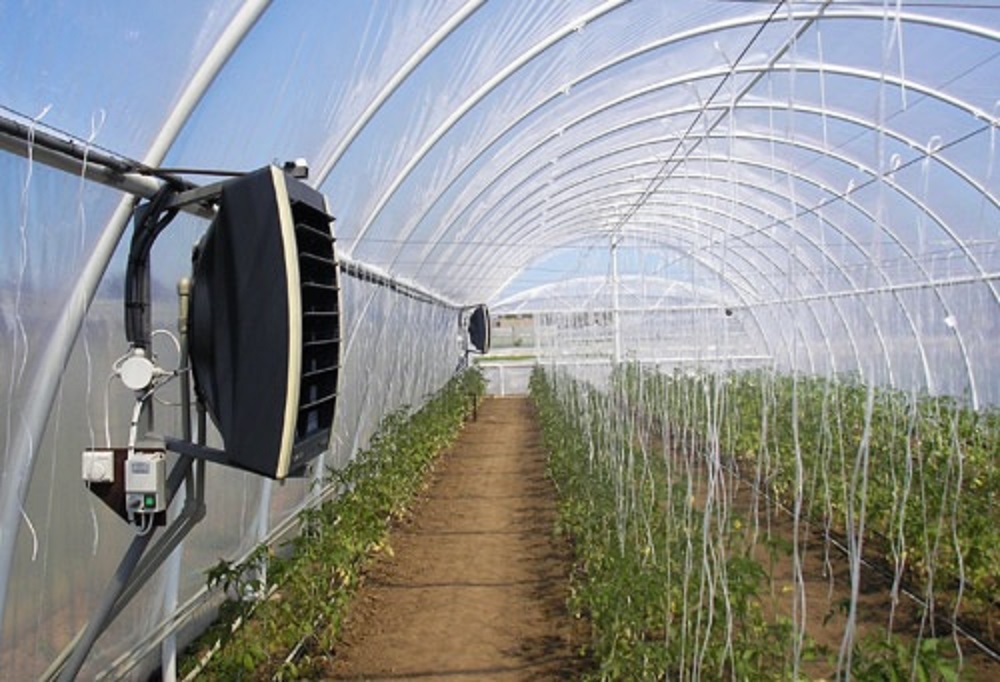7 tips for choosing a warm baseboard: electric or water
Not so long ago, a completely new heating equipment called a warm baseboard appeared on the Russian market. Despite the fact that such systems are widely used in Europe as an alternative to conventional heating systems, they are quite rare in our homes. However, those who have been using all the advantages of this modern equipment for some time, actively share positive reviews and argue with theorists who argue that "it cannot fully warm." In this article we will give you tips for choosing a warm skirting board, electric and water its varieties, and highlight the advantages and disadvantages of each of them.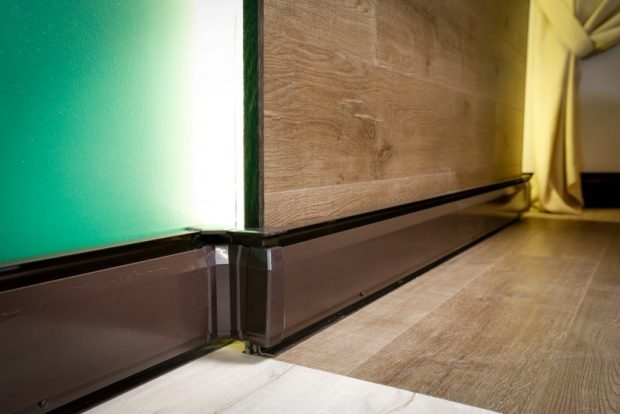
1. Design and principle of operation of a warm skirting board
We can say that a warm baseboard is a fundamentally new approach to the issue of heating an ordinary apartment or a private house. This system got a similar name due to its visual resemblance to familiar baseboard and compact size. Externally design represents:
- aluminum box, consisting of three walls - upper, lower and front;
- the thickness of the box is not more than 3 cm;
- The height of the front panel ranges from 10 to 24 cm;
- For decorative purposes, the ends of the box are closed with special plugs;
- Inside the box are enclosed heating elements that are attached to the wall using mounting brackets.
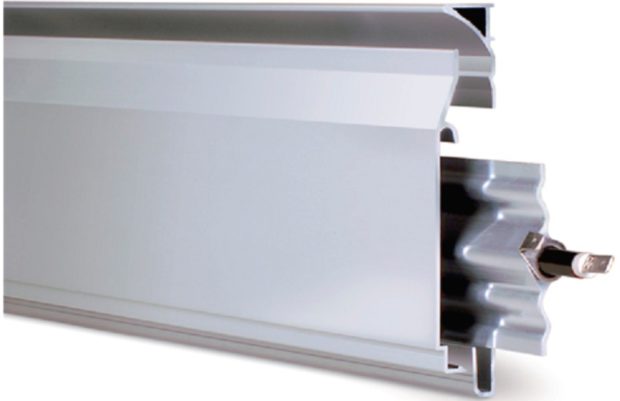 Depending on the heat source used, the warm skirting board can be electric or water. By the way, outwardly they are practically indistinguishable. The principle of the warm skirting board significantly different from the principle of operation of conventional heating appliances - convectors or heating radiators.
Depending on the heat source used, the warm skirting board can be electric or water. By the way, outwardly they are practically indistinguishable. The principle of the warm skirting board significantly different from the principle of operation of conventional heating appliances - convectors or heating radiators.
Anyone who was more deeply interested economical heating methods It is known from your home that the same batteries heat the room by convection. That is, the heat coming from their surface heats the air. In this case, hot air rises up under the ceiling, where a thermal cushion is created, which forces cold masses down. In rooms with low ceilings such a difference is not very noticeable and, in principle, comfortable conditions are created. But in rooms with high ceilings, it is necessary to use forced ventilation, which will facilitate the mixing of air masses of different temperatures and their early heating. Moreover, most often in the corners of the room the air will still remain cold. Thus, for heating the entire volume of air in the room, higher temperatures and a longer time are required. Heat loss at the same time make up 20-30%.
Surely, using electric oil convectors, you paid attention to the fact that next to the heater you are warm, even hot, but literally a meter away, the air is cold. In addition, the air becomes overdried and odors can often be detected.
The work of a warm baseboard based on the gradual uniform heating of adjacent walls and floor. Convection takes up no more than 30% of the radiated heat to heat the air. Warming begins with the lower layers of air. Then the heat slowly "creeps" up the walls, while heating their surface. Thanks to this, it became possible to achieve the same temperature over the entire height of the room. 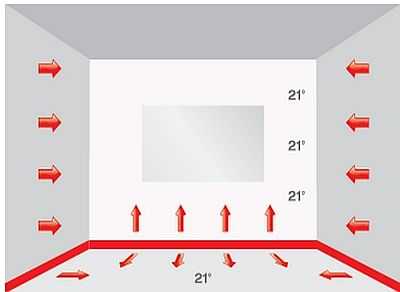 A person begins to receive heat from the surface of the walls, which after heating to a predetermined temperature literally radiate it. This method of heating the home was used in very old times. Then, in the walls of the houses, a system of cavities was specially provided for supplying hot steam. It is also noteworthy that rising along the walls, hot air practically does not mix with the surrounding, thus creating thermal curtain. This is especially true when heating rooms with panoramic windows. Cold air flowing through leaky joints simply cuts off and does not cool the room.
A person begins to receive heat from the surface of the walls, which after heating to a predetermined temperature literally radiate it. This method of heating the home was used in very old times. Then, in the walls of the houses, a system of cavities was specially provided for supplying hot steam. It is also noteworthy that rising along the walls, hot air practically does not mix with the surrounding, thus creating thermal curtain. This is especially true when heating rooms with panoramic windows. Cold air flowing through leaky joints simply cuts off and does not cool the room.
Heat loss when using warm skirting boards make up only 5%. Needless to say, this method is economically viable? It was proved that when the walls are heated to a temperature of 37-38 ° C, the person becomes warm and comfortable even though the air temperature in the room is 16-17 ° C. Warm baseboard can be used as a full heating systems. Then you need to mount it around the entire perimeter of the room. It can also be used as an additional heat source in places where the installation of familiar radiators is not possible. For example, for heating loggias with french glazing.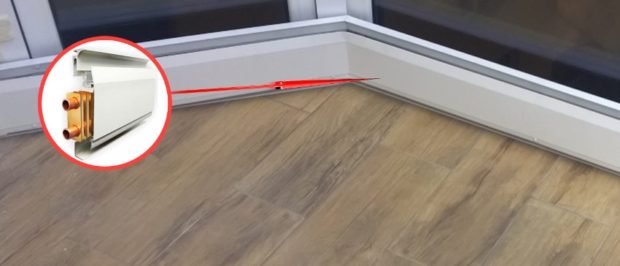 Then the baseboard should be placed along double-glazed windows. Interested in many question - Is it advisable to place the baseboard around the entire perimeter of the room if large furniture is located along some walls? Considering the principle of its operation and the fact that the heat rising upward is more directed towards heating the walls, rather than the surrounding air and adjacent objects, we can say that furniture does not interfere with the full operation of the system. In addition, heating TENs have a low-temperature mode of operation. They do not heat up above 60 ° C and cannot harm furniture or any type of floor covering. Thus, we can conclude that warm baseboard is safe and economical source of heat.
Then the baseboard should be placed along double-glazed windows. Interested in many question - Is it advisable to place the baseboard around the entire perimeter of the room if large furniture is located along some walls? Considering the principle of its operation and the fact that the heat rising upward is more directed towards heating the walls, rather than the surrounding air and adjacent objects, we can say that furniture does not interfere with the full operation of the system. In addition, heating TENs have a low-temperature mode of operation. They do not heat up above 60 ° C and cannot harm furniture or any type of floor covering. Thus, we can conclude that warm baseboard is safe and economical source of heat.
2. Electric warm skirting board
Electric models warm skirting boards are more popular than water skirtings. This is due to a simpler installation method and the fact that electricity is available even in remote areas. Principle of operation electric warm skirting board is similar to the principle of the system "warm floor". Let's consider in more detail construction:
- Inside the box, you can see two copper tubes of a tube with a diameter of 13 mm and a wall thickness of 1.5 mm. Tubes are tightly mounted on brass ribs. In the lower tube is a low-temperature dry heating element;

- Inside the upper tube is a heat-resistant electrical cable with silicone insulation, which provides power to the heater;
- Copper is an excellent conductor of heat. The skirting faceplate is made of aluminum, which is also a good conductor. By combining these two alloys, it became possible to achieve maximum heat transfer;
- Additionally, the system is equipped with thermostat and temperature sensor. It was with the help of a thermostat that it became possible to achieve significant savings. Manufacturers offer a variety of cost models, respectively, with different capabilities. There are thermostats that allow you to set the desired temperature for several days in advance. Simpler models require constant manual adjustment.
It cannot be stated unequivocally that some models are better than others.The choice should be based on your financial capabilities and on whether you are ready to constantly adjust the sensor manually. The temperature controller is connected to a temperature sensor, which controls the operation of the entire system. To achieve the most correct indicators, the sensor should be placed at a height of 130-150 cm from the floor level. When the temperature in the room reaches the set point, the thermostat will turn off. And it will turn on again when the temperature drops to the lower set temperature.
Length one module An electric warm skirting board can range from 0.7 to 2.5 m. This makes it possible to dial a heating circuit of various capacities depending on the size of the room. On average, 1 linear meter of the baseboard generates from 180 to 280 watts of heat. In order for the work of the electric baseboard to be safe, it is worth using it only in the presence of a powerful, new wiring. Manufacturers claim that you can simply include a skirting board in power outlet. But for reliability, it is still recommended to output a separate line that will go directly to the meter and put a separate one on it machine.
3. Watery warm skirting board
The principle of operation of water models is similar to work water boilers. Design They are significantly different from electrical:
- The water baseboard has no heating elements. It involves the use of an already heated coolant. Both ordinary water and antifreeze can play its role;
- Heated liquid flows through cross-linked polyethylene tubeslocated inside the box;
- There are two tubes inside, one above the other. In this case, the coolant is supplied through the upper tube, and its intake through the lower one;

Adequate pressure is needed to circulate the fluid through the system. Therefore, to organize water heating in private homes, circulation pumps are used. With their help, the coolant under a certain pressure passes through the distributor and is fed through the tubes to the heating modules.
Water modules are connected with each other using special tubes made of cross-linked polyethylene. If the junction is at an angle, then polyethylene or corrugated corner joints are used. The latter are usually made of steel or copper. It is worth noting that for the correct operation of water circuits, their length should not exceed 12.5 meters. Some manufacturers allow a length of up to 15 m. If this length is not enough to heat the entire room, it is recommended that two separate heating circuits be equipped.
The temperature in the room when using a warm water baseboard can be controlled either manually on the distributor, or, as in the previous version, using room thermostats. They, in turn, control the servos of the valves of the distribution system.
As you can see, the organization of a water heating system requires much greater costs than electric. In addition to installing the pump and manifold, it is necessary to ensure proper storage conditions for the coolant and its cleaning. That is why they often prefer electric models.
Concerning water connection warm skirting boards within a regular city apartment. It is possible to connect the baseboard to the district heating network. In this case, the danger is the temperature of the coolant and water hammer, which are often present when the system starts. The water temperature in the batteries is 85-90 degrees, and its pressure can reach 9 or more atmospheres. These indicators can have a detrimental effect on the design of a warm skirting board. Our task is to minimize their impact by physically separating the internal heating circuit from the centralized network.
Our task is to minimize their impact by physically separating the internal heating circuit from the centralized network.
- This can be done with heat exchangers.That is, devices that, with the help of heat-conducting plates, will take on excess heat from the heat carrier of the centralized network and transfer the required amount to the internal independent circuit.
- In typical dwellings, riser wiring is used. Moreover, in each room one or two-pipe riser can pass. In this case, the connection of the water skirting board is directly performed using copper fittings by soldering or plastic pipes complete with fittings. Thus, the restrictions on the temperature and pressure of the coolant are removed.
- In places of connection to the riser, a thermal vent is installed.
4. Warm baseboard: advantages and disadvantages
To summarize the foregoing and highlight the undeniable advantages Using the system of warm skirting:
- Due to the fact that the heat from the baseboard rises up along the walls while warming them well, you can once and for all solve the problem mold and various fungal microorganisms. After all, dry walls are one of the key aspects that affect the indoor microclimate;
- The room is heated evenly and simultaneously along its entire perimeter. There is no need to wait until the heat from the carrier spreads throughout the room, as is the case with the use of heating radiators;
- The ability to achieve uniform temperature throughout the height of the room. In this case, cold zones will not form. Many manufacturers claim that the temperature difference between the ceiling and the floor itself can reach no more than a couple of degrees. It must be understood that these indicators can only be achieved under ideal conditions. Plays an important role thermal insulation the room itself and its heat loss;

- Heating occurs by the radiation method, which is most useful for the human body. It is perceived similarly to solar heat;
- Heat losses of the system itself make up no more than 5%, and no more than 30% of the generated heat is spent on heating the air in the room by convection;
- Warm baseboard compatible with any kind of flooring;
- Thanks to the moderate temperature of the baseboard itself, you can not be afraid that the nearby furniture will crack out;
- Aesthetic appearance of the room, not spoiled by the overall radiators. And thanks to the variety of colors, you can choose a warm baseboard for any interior and make it almost invisible;
- Thanks to the miniature size, with the help of a warm baseboard, you can heat rooms in which the installation of batteries is simply impossible;
- Thanks to the presence of temperature sensors and thermostats, it is possible to adjust the temperature in a short period of time. And when using more modern models of thermostats, the system will maintain comfortable conditions almost without your participation;

- Thanks to thermostats, the use of warm skirting boards is economically viable. In addition, the amount of energy consumed will be several times lower than when using other converter-type electric heaters;
TO disadvantages can include:
- Tangible cost of the system;
- Due to the small distribution in some medium-sized cities, acquiring a warm baseboard can be problematic;
- Although the system case is well protected from moisture, it is still not recommended to use a warm baseboard in rooms with a high humidity indicator. An exception may be special models designed for use in such conditions;
- Limited maximum possible length of the contour of a warm water baseboard. It is really worth paying attention to this fact, because the functioning of the system depends on it.

5. The calculation of the required number of skirting boards
We have already seen that the warm skirting system is a very good solution for heating not only an ordinary apartment, but also private houses.Now let's try to figure out a question that will be of interest to those who really decide to purchase this equipment. For more correct calculations, it is necessary take into account the heat loss of the room. This is influenced by the type of glazing, the number of window openings, the end room or not, the thickness of the walls and their cover is much more.
You should also build on the generally accepted norms, which state that for heating 1 sq.m. A living room needs 60-100 watts of heat. These figures are relevant for residents of the middle climatic zone. For more northern regions, 150-200 watts of heat will be required.
Now you need to multiply the area of the room by the average, for example 12 m2 × 150 W = 1800W. To this indicator, you need to add a small margin, but without fanaticism.
How to calculate the length of a water heating element
The choice of dyne is primarily affected by the thermal pressure of the system. At the same time, note that a warm baseboard refers to systems that do not work with high temperatures. And the difference between the temperature of the supply coolant and the return is not more than 5 ° C. Thermal head can be calculated by the formula
∆T = ((tп + tо) / 2) -tv, Where
- tп - temperature of the supply coolant;
- tо is the temperature of the return medium;
- tv is the air temperature in the room.
It follows that in order to maintain a room temperature of 20 ° C and a coolant temperature of 70 ° C, we have a heat head that is ((70 + 65) / 2) -20 = 47.5 ° C.

Now, thanks to the data in the table, you can see how much heat will be generated by 1 linear meter of warm water baseboard. For a value of 47.5 ° C, it is 218 watts. To heat a room of 12 m2, for which 1800 W of heat will be required, 1800/218 = 8.25 meters of the baseboard is required. The indicator can be rounded up or down at your discretion.
How to calculate the required length of an electric warm baseboard
In this case, everything is much simpler. You can calculate the required amount for heating a room of any area, based on average statistics, as in the example above. Next, carefully look at the packaging, which will always indicate the value of heat transfer from one linear meter of the product. The number of meters is determined by dividing the required amount of heat per room by this value. For example, to heat a room of 12 m2, for which 1800 W of heat will be required, 1800/190 = 9.47 meters of the baseboard are needed. The indicator 190 is taken conditionally.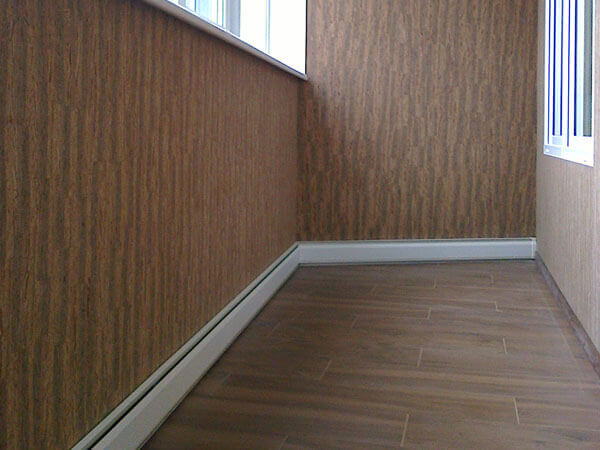
6. Do-it-yourself installation of a warm skirting board
In addition to the high cost of the system itself, you still have to pay a tangible amount for its installation. In this case, the calculation is made for each running meter. Based on this, many people have a question - can whether make installation warm skirting systems on your own? We can say that with the skills to work with electrical wiring and plastic pipes, as well as with due attention and legibility, this is not so difficult.
Self-assembly of a warm water baseboard
For work you will be required the following materials:
- Plastic pipes;
- Thermal insulation material;
- Manifold equipped with cranes;
- Metal and plastic adapters;
- Set of tools.
Installation should begin with mounting the manifold. It is necessary to bring a pipe to it, which will provide its power. As a heat carrier source, you can use a boiler that runs on any type of fuel. The only thing condition - for the correct operation of the system, it is necessary to provide a pressure of at least 3 atm. After you calculate the required length of the plinth according to the recommendations of paragraph 6, you can proceed to pipe wiring.
- It must be remembered that the maximum length of the circuit should not exceed 12.5 or 15 m, depending on the manufacturer. And that there should be two pipes in the system - one for supply, the other for the intake of coolant;

- It is also important not to forget about thermal insulation in order to reduce heat loss.To do this, along the perimeter of the room between the wall and the pipes you need to lay special material;
- Now you need to fasten the base to which the heat exchangers will be attached. The bar is fixed with screws. Please note that in the finished form, the skirting board should not lie flush against the floor. Leave a gap of about 1 cm to prevent overheating of the device;

- Now fasten the modules and connect them together using crimp fittings;
- When the structure is assembled, you need to connect it to the common highway by mounting the collector;
- Before final assembly, be sure to check the system for leaks. For this, a test run is performed, which at the same time will show the correct operation;
- If the system works reliably, fasten the front panel to the baseboard. To do this is very simple, following the recommendations in the instructions.

Self-assembly of an electric warm skirting board
Installing an electric baseboard requires completely different skills and attention to slightly different factors. It is recommended to connect the system directly to the dashboard and equip it with a separate machine. How many contours will be in your apartment or house, so many separate lines should be. Choose wires with a large cross section that can accurately withstand the load (at least 2.5 mm). Do not forget about the need to connect a thermostat for each circuit and a temperature sensor for each room. This will help to set the most optimal temperature for each room.
- The start of installation should begin with the laying of thermal insulation material;
- Then screw the base of the baseboard;
- Fix heat exchangers on it;
- Perform a parallel connection of wires;
- Perform a thorough visual inspection for the absence of non-insulated areas;
- Close the design with the front panel;

- Connect the heating circuit to the thermostat and connect to the distribution panel;
- Perform a trial run of the system.
The clearance from the floor to the baseboard must be at least 1 cm and the distance from the wall at least 1.5 cm. This will ensure proper convection and protect the system from overheating.
7. Manufacturers and pricing
Focusing on customer reviews, which have already appreciated all the advantages of a warm skirting board and the quality of the product itself, we have identified several trusted manufacturers:
- Warm baseboards of the company can be distinguished from domestic ones. "Mr. Tektum »("Mr. Tectum"). This is one of the most popular manufacturers. The modules of this company have a depth of 3 cm, a height of 14.5 cm and a length of 2.5 meters. The complete set is complete - a heating element, front, lower and upper panels, clips and even heat-insulating material. One module generates 500 watts of heat and can be heated to a temperature of 65 ° C. These skirting boards consist of two copper pipes and brass plates. The front panel is made of aluminum. Price per linear meter is about 3800 rubles.
- "Rehau" is quite popular floor heating manufacturersthat release and warm skirting boards. A characteristic and distinctive feature of the products of this company is the use of flexible polyethylene pipes. Such pipes do not corrode and do not fray at the places of inflection. Electric models are small in thickness, which greatly expands the possibilities of their application. Average cost running meter is 9800 rubles. but for the money you get a really high-quality and reliable heating system;
- Austrian company "Best Board" can also offer a quality and reliable system. The company uses many innovations and constantly improves its products. This allows you to significantly increase the efficiency of the warm skirting board. Cost their production per meter is 7000 rubles.
As you can see, the price range allows you to choose a model depending on your financial capabilities. Just before buying, be sure to read the reviews of real customers.

